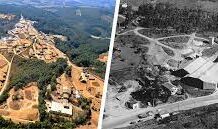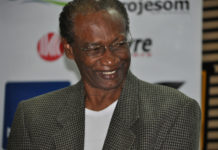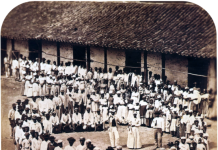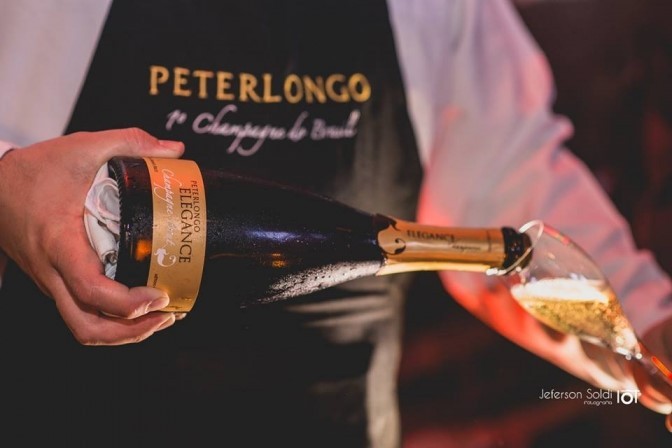

Por Osvaldo Tetaze Maia.
If there’s a word that means the same thing all over the world, has the same sound when you heard it, as well as brings the same image to your mind, certainly is “Champagne”! We can name dozens of words that are already incorporated in any local language in its original writing, and mostly are the words of the new technology and of the new generation of the social media.
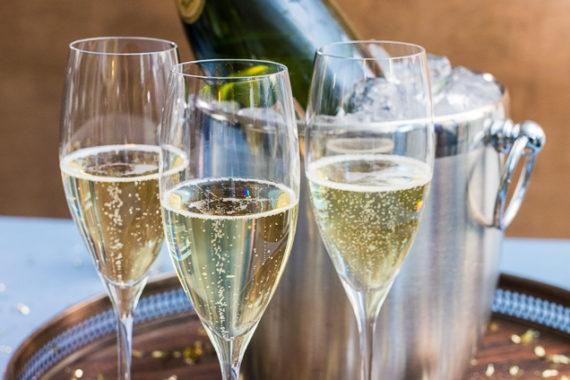
When we listen or read the word Champagne we always think in the famous sparkling French wine. Nowadays, the world recognizes Champagne as the region of north-east of France, land of the famous sparkling wine.
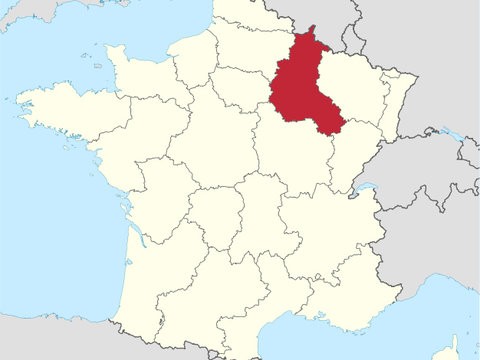
France, Champagne region in red
According the Wikipedia Encyclopedia, the Romans were the first to plant vineyards in this area of northeast France, with the region being cultivated by at least the 5th century, possibly earlier. When Hugh Capet was crowned King of France in 987 at the cathedral of Reims, located in the heart of the region, he started a tradition that brought successive monarchs to the region with the local wine being on prominent display at the coronation banquets.
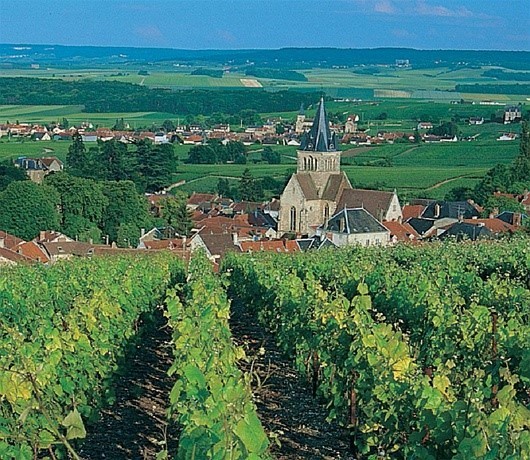
Reims, Champagne, France
There is a crucial point to better understand the difference between sparkling wine and Champagne, because all champagne is sparkling, but not all sparkling wine is champagne.
The sparkling name is given to every wine that undergoes two natural fermentations. The first of these is the alcoholic fermentation, common to all wines, that turns grape sugar into alcohol and occurs in tanks or oak barrels.
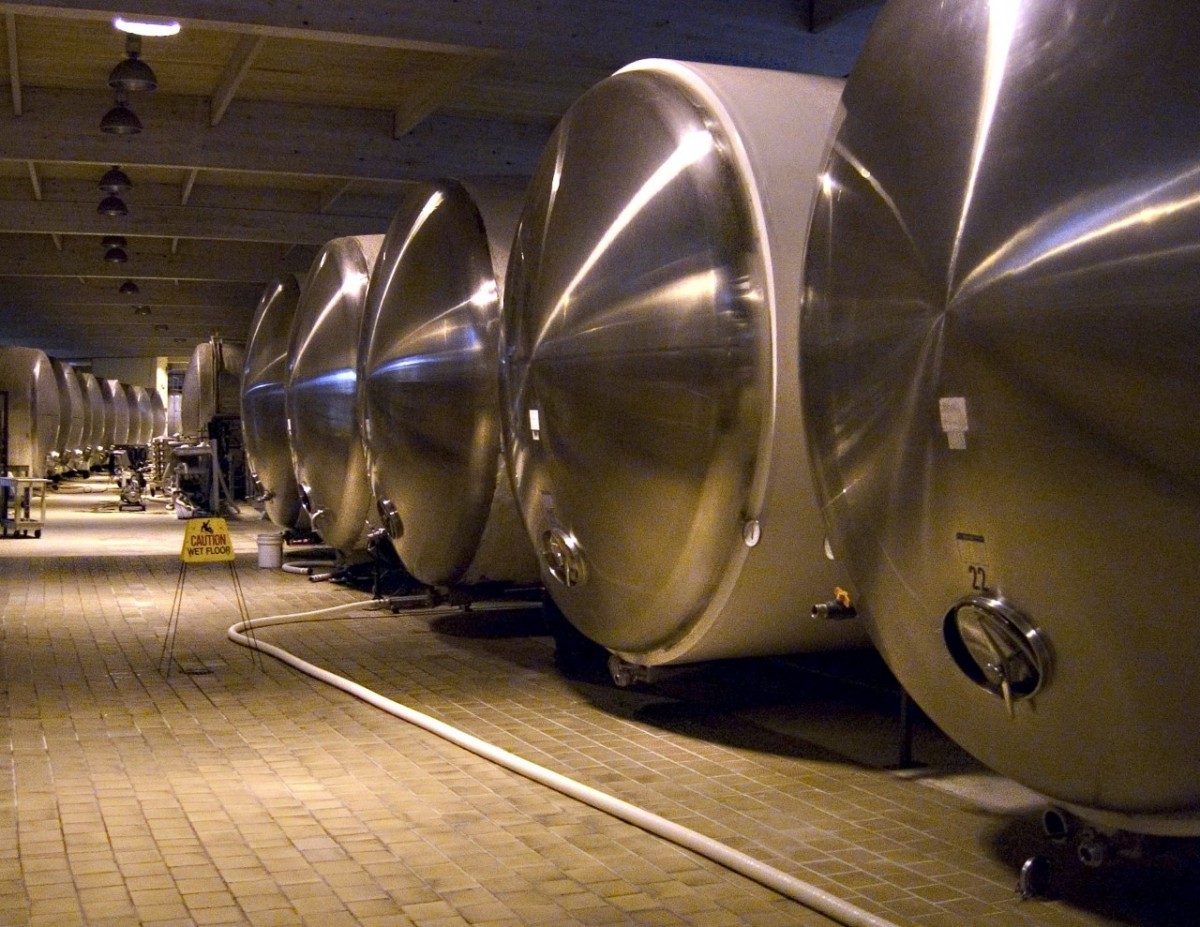 Fermentation process in tanks
Fermentation process in tanks
Other crucial point to understand this matter, is that when the sparkling wine acquires the effervescence it can occur in pressurized stainless steel tanks (charmat method) or can be made in the bottle itself (champenoise or traditional / classic method). As a result, sparkling wines can be produced in different locations with different processes and grapes.
Now, let’s go to the controversial term “Champagne”. Briefly, Champagne is a sparkling white wine produced in the Champagne region of north-east France.
To receive this nomination, the drink must be produced in the administrative region of Champagne-Ardenne and must be made with Pinot Noir, Pinot Meunier and Chardonnay grapes, grown within this delimited region, respecting strict production methods.
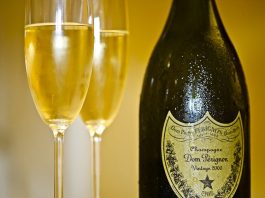
The brand name champagne is rigorously controlled in France by an Entity named “Domination of Origin Controlled”, established in 1927 and protected with great vigilance.
The control is so strict that there are even examples of such cases as the Commune of Champagne, a locality with 660 inhabitants, situated in Switzerland, which had to leave out the name Champagne in the (non-sparkling) wines produced in its territory according to an agreement between Switzerland and the European Union in December 1998.
For the same reason, the high-fashion company Yves Saint-Laurent had to stop the launch a perfume that had called Champagne. The nomenclature had to be modified and the perfume was marketed under the name of Yvresse.
However, there is a little fact in Brazil that must be showed to the public, because despite the prohibition all over the world to use the brand name in any sparkling wine that is not produced in the norht-east region of France, there is one Winery in the state of Rio Grande do Sul, Brazil, one of the best regions in South America for grape production, “Vinícola Peterlongo” – Peterlongo Winery – that still has the rights to produce and marketing in Brazil its Champagne, and the history of how it happened is pretty amazing.
 Peterlongo, the 1st (and unique) Champagne in Brazil
Peterlongo, the 1st (and unique) Champagne in Brazil
While all wine producers all over the world had to abandon the Champagne nomenclature, in Brazil, more precisely in the mountains of the state of Rio Grande do Sul, the Peterlongo Winery was able in the 1970s to obtain authorization from the Federal Supreme Court to keep the name champagne on its labels. This happened because the drink began to be produced there with the required process, before the regulation of 1927 in France. After a long legal process in the seventies against a French Company, Peterlongo Winery won the right to use and disclosure the name in the presentation of its products in accordance with the Brazilian Law number 78.835.
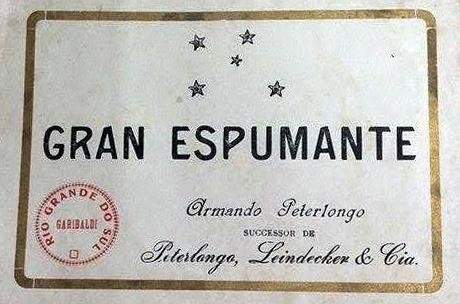 Label of The decade of 1950
Label of The decade of 1950
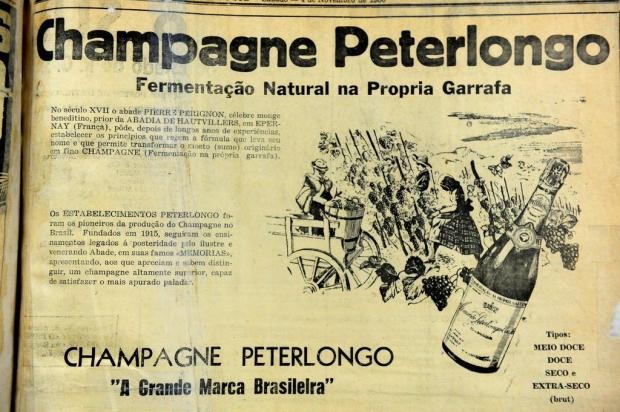
* A brief history about Peterlongo Winery
The state of Rio Grande do Sul was on Advertising in newspapers from decade of 1950 of the southern Brazilian region that received the first Italian families in the second half of the 19th century, and one of these families was formed by Manoel Peterlongo, an immigrant who brought remarkable development to Brazil.
The Brazilian Imperial Government’s project to promote colonization in Rio Grande do Sul resulted in an industrial success that strengthened the economy in several segments, and among the protagonists of the innumerable enterprises, was Manoel Peterlongo who was a Surveyor in Italy.
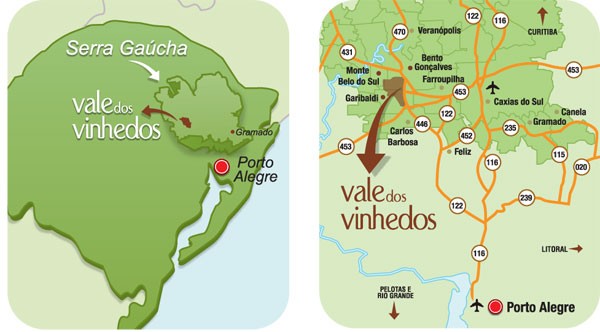
Map of state of Rio Grande do Sul, southern Brazil
Established around 1878 in the region where today are the cities of Garibaldi, Bento Gonçalves, Caxias do Sul, Gramado, among others, to demarcate land, the Italians did not fail to find a segment of industry that was still in its initial process of formation.
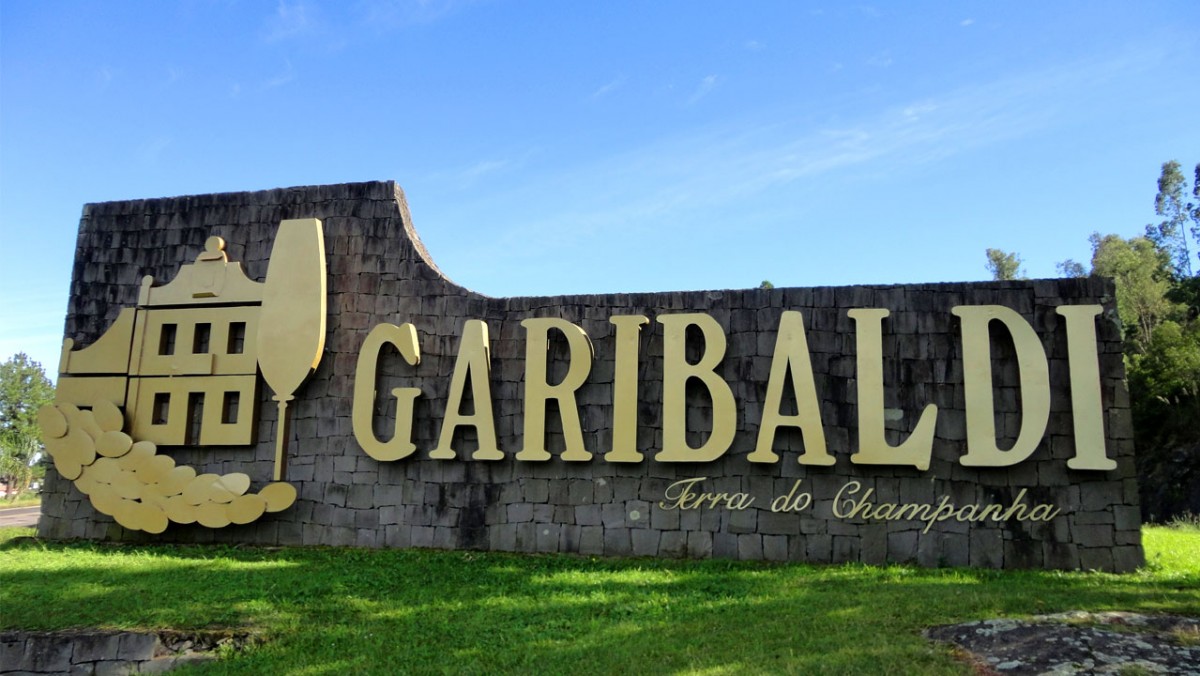 Garibaldi, southern Brazil, “Land of Champagne”
Garibaldi, southern Brazil, “Land of Champagne”
In his package of experience, Manoel Peterlongo brought a European conscience and the recipe to elaborate the delicious champagne. The method of this noble drink inspired Peterlongo to create a winery, whose project was consolidated over the time.
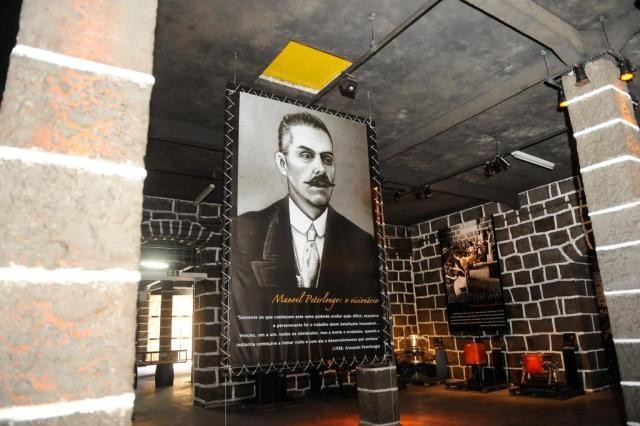
Manoel Peterlongo the first Italian Immigrant to produce sparkling wine in Brazil
Facing innumerable adversities to produce, Manoel Peterlongo persisted in a dream introducing noble caste of grapes to elaborate his sparkling wine. Today, the history of the sparkling wine Peterlongo represents a patrimony of the municipality of Garibaldi and one of the most emblematic marks of the Brazilian production of wines.
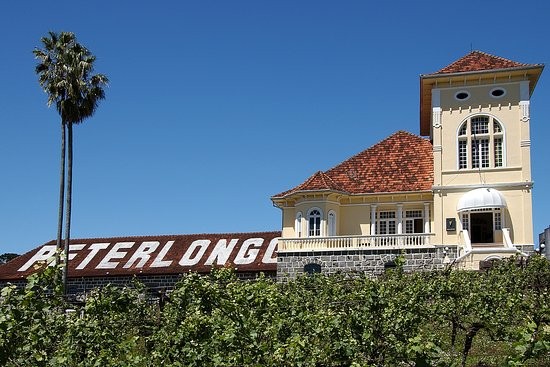
Peterlongo “Castle” in Garibaldi, southern Brazil
In 1915, with the help of the youngest son of Manoel, Armando Peterlongo, the winery expanded a production that strictly obeyed the criterion of Perignon. The natural fermentation in the bottle itself, which originated natural gas, was one of the differentials. The meticulous work of positioning bottlenecks down to remove impurities from the cork, and the required rotational movements, has successfully positioned the quality of Peterlongo sparkling wine on the market.
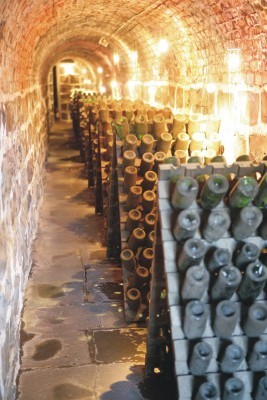 Bottle down stock
Bottle down stock
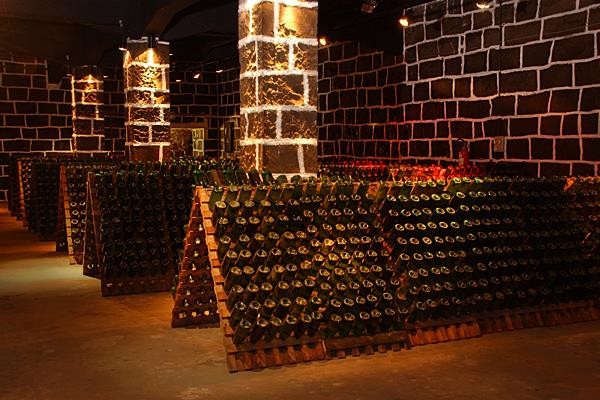
Bottle down stock
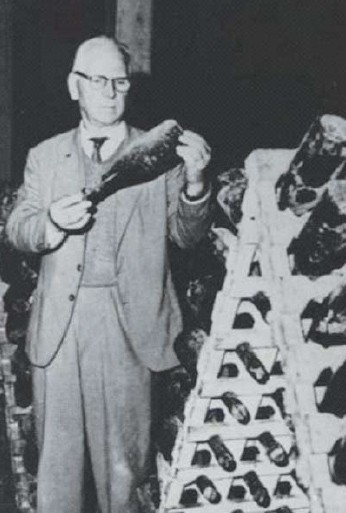 Armando Peterlongo
Armando Peterlongo
The fascination in elaborating a noble drink, which Manoel Peterlongo already tasted in Italy, was maintained by the son Armando Peterlongo, who innovated and expanded the production of natural sparkling wine during the 20th century.
Today the Winery belongs for another group of enterprises directed by its owner Luis Carlos Sella, who bought it in 2002, and this history is still pretty amazing, due to the extreme coincidence that occurred the facts that bring Sella to conclude one of the biggest deal of his life. Some could say that from heaven Mr. Peterlongo conducted him to that day in 2002 to the airport of Bento Gonçalves where Sella has another industry.
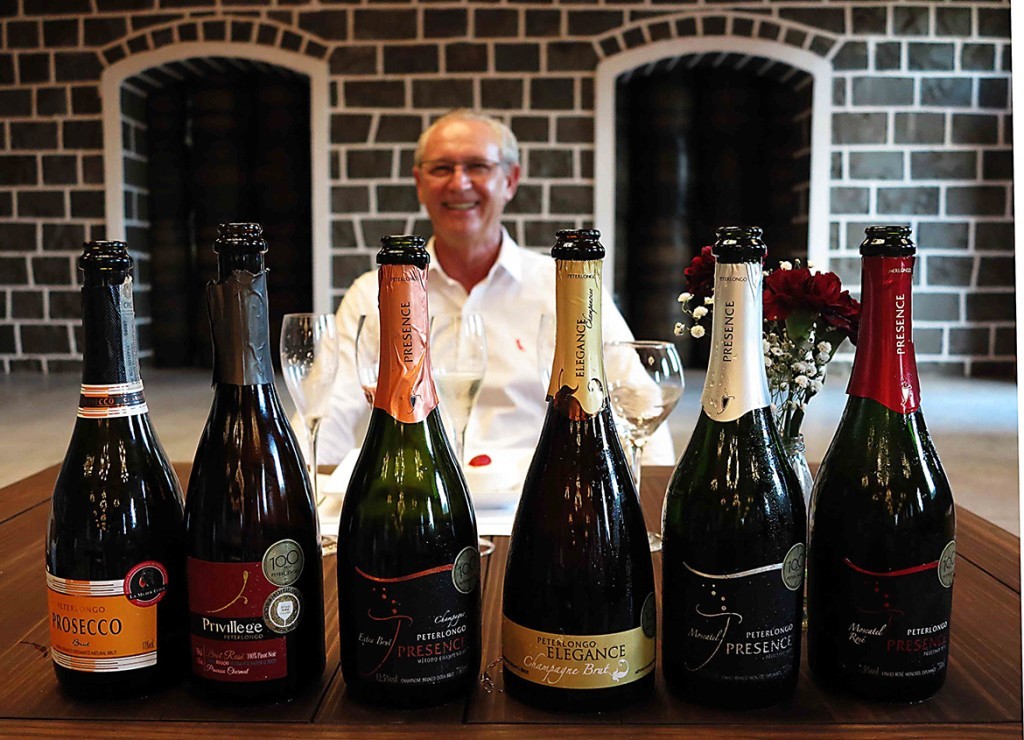 Luis Carlos Sella and his “Peterlongo Champagne” line
Luis Carlos Sella and his “Peterlongo Champagne” line
The entrepreneur Sella who pilots its own jet Cessna Citation in its wanderings around the Country, attributes to an incredible coincidence that how he learned that the Peterlongo Winery could be one of the best investments of your career.
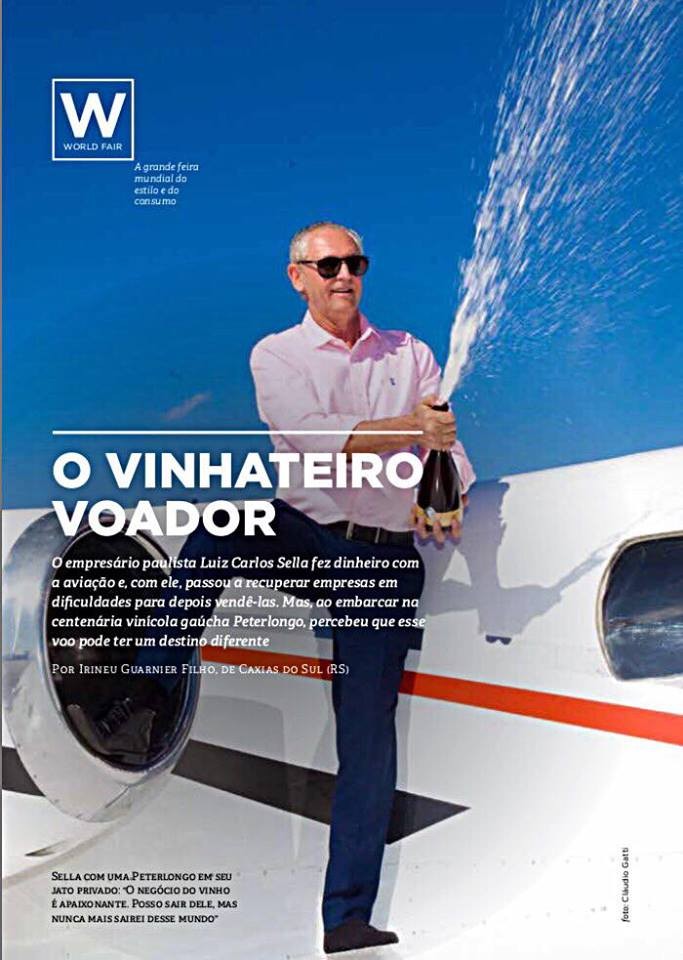 Luis Carlos Sella and his Jet with a Peterlongo Champagne
Luis Carlos Sella and his Jet with a Peterlongo Champagne
Partner at the Rinaldi Motorcycle Tires factory in the city of from Bento Gonçalves, he was helping a friend from Manaus, Amazon, who was trying to buy an airplane Seneca which was parked in the airport of neighboring Garibaldi. When the friend went to get the plane, Sella found himself casually in the hangar with one of the winemakers of Peterlongo.
While the plane was prepared for the long transfer to Manaus, the winemaker said that the company where he worked was experiencing serious financial difficulties, and that bankruptcy was imminent. This fact triggered the entrepreneurial instinct of Sella, who until that day had never been interested in wines and winery, much less in vineyards, caves or even oak barrels. Immediately he asked to the Peterlongo employee to schedule an interview with the owners of the winery.
A week later, Sella attended the meeting driving an old Ford Escort that belonged to one of his collaborators in the Rinaldi Tire factory, since he wasn’t with his car that day. The simplicity of the vehicle driven by the unknown who wanted to buy one of the most traditional Brazilian wineries must have positively impressed the owners, imagined Sella.
But conversation evolved well and after a superficial assessment of the situation the business ended up being realized. Five days before the Judge decrees the Bankruptcy, Peterlongo Winery was “saved by the bell”, as use to say Sella, who concluded the deal to pay all debts and keep the centennial company running.
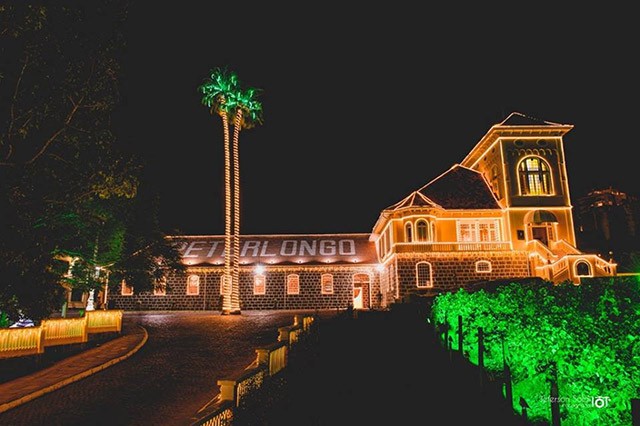 Champagne “Castle” in Garibaldi
Champagne “Castle” in Garibaldi
Peterlongo has always been at the forefront of the Brazilian wine industry, because was the first winery to employ female laborers and the pioneer in the minimum wage for its workers, already under the management of Armando, in the 1930s. It conquered Brazil and reached the international market in the next decade, with its labels marketed by the Macy’s network, in New York.
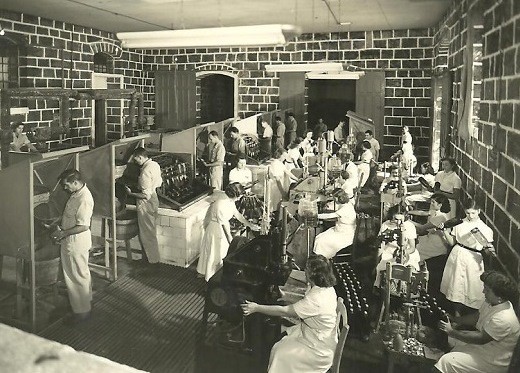 Women working at Peterlongo Winery in the thirties
Women working at Peterlongo Winery in the thirties
Peterlongo became a ubiquitous brand in official Brazilian solemnities of the time, baptisms of ships and airplanes, their sparkling wines were also part of the menu of banquets offered by several Brazilian governments and even the Queen Elizabeth II, of England, praised the “Brazilian Champagne” when she visited the country.
Peterlongo Winery still produces its traditional sweet filtered sparkling wine named “Espuma de Prata” (Silver Foam), best-selling in Brazil and Colombia, however, Sella has been investing for 15 years in the revitalization of vineyards and the fine sparkling wines from Peterlongo’s portfolio.
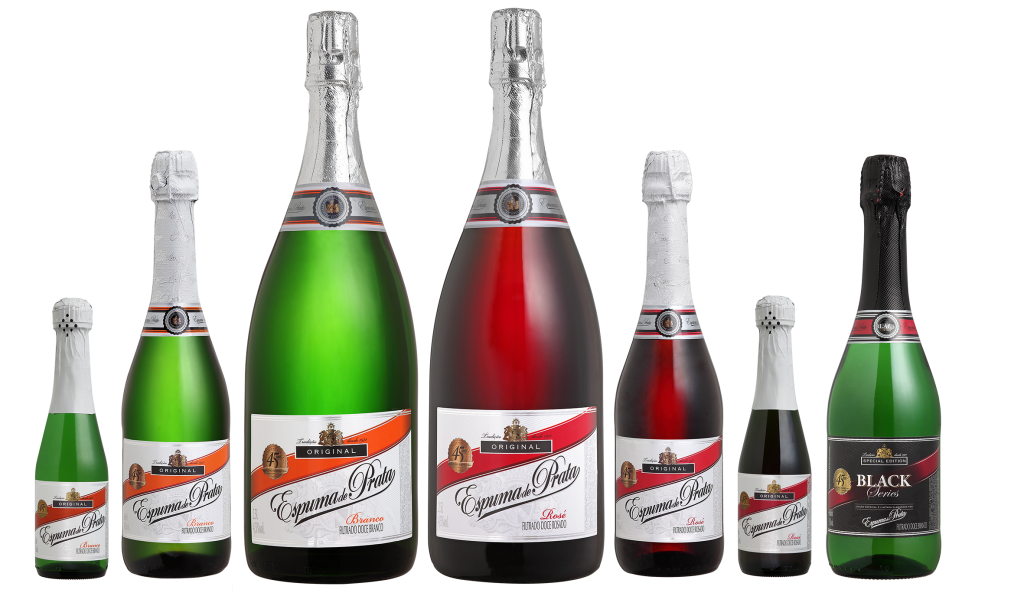 Peterlongo traditional “Espuma de Prata” sparkling wine
Peterlongo traditional “Espuma de Prata” sparkling wine
Since the great party of commemoration of the company’s 100 years in 2015, this process has been intensified, and the results begin to appear. Recently, the Sparkling Elegance Champagne Nature won the Top Ten in the National category of sparkling wines in the “Expovinis”, the largest wine fair in Brazil, held in São Paulo.
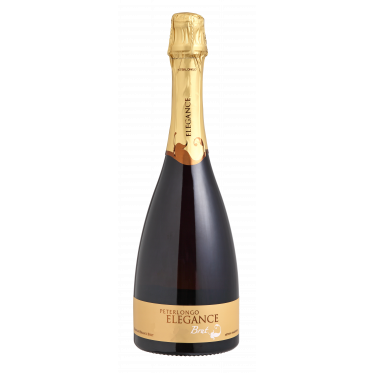 However, Peterlongo’s most attractive investment in recent years has been, without doubt, the hiring of the consultancy of the French enologist Pascal Marty, responsible for upgrading the winery’s top line. Formed at the prestigious Wine Institute of Bordeaux, France, Marty was winemaker of the legendary Baron Philippe de Rothschild S.A. for over 14 years, and responsible for some of the most daring and successful winemaking projects in the French industry all over the world.
However, Peterlongo’s most attractive investment in recent years has been, without doubt, the hiring of the consultancy of the French enologist Pascal Marty, responsible for upgrading the winery’s top line. Formed at the prestigious Wine Institute of Bordeaux, France, Marty was winemaker of the legendary Baron Philippe de Rothschild S.A. for over 14 years, and responsible for some of the most daring and successful winemaking projects in the French industry all over the world.
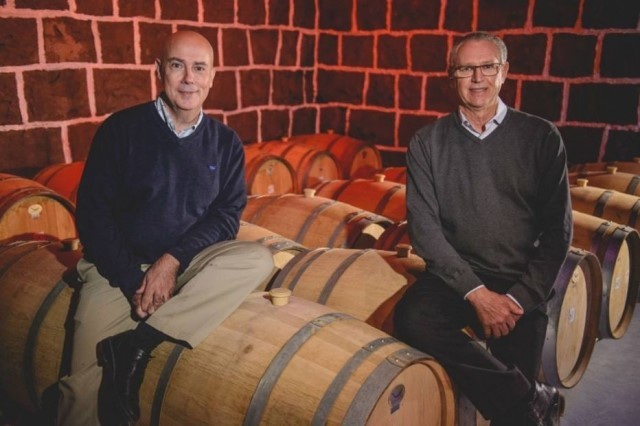
Pascal Marty and Luis Sella
Even without completing Peterlongo’s recovery work, a Company that was considered “a cultural patrimony of Brazil”, and despite the sentimental attachment to the enterprise, Sella does not rule out the possibility to sell the company for an offer, well, let us say, irrecusable. Business is business and the wine industry is exciting. I can get out of it, but I will not go out of the wine world anymore, he says.
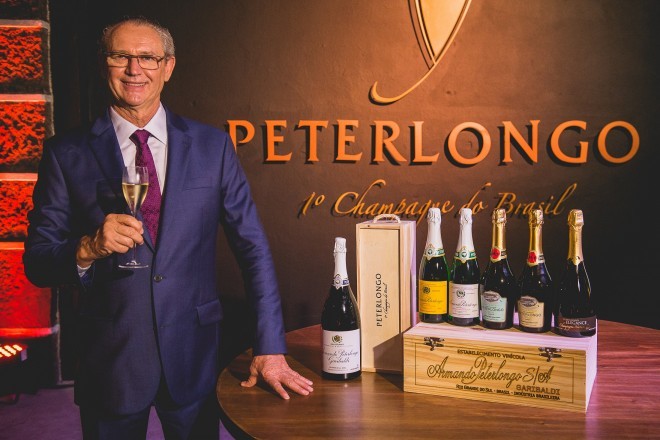 Luis Carlos Sella at the show room of Peterlongo in Garibaldi
Luis Carlos Sella at the show room of Peterlongo in Garibaldi
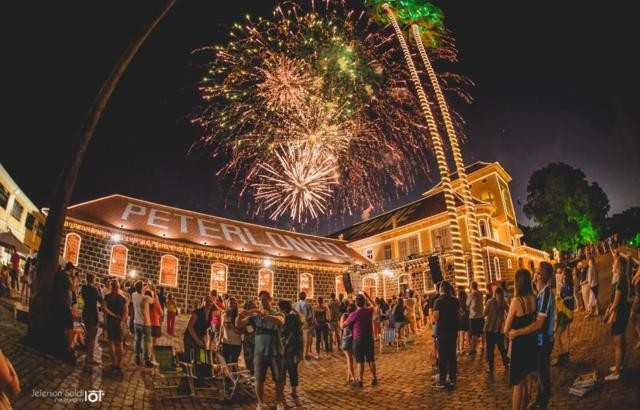 Christmas night party at Peterlongo Winery Castle in Garibaldi
Christmas night party at Peterlongo Winery Castle in Garibaldi
***
Por Osvaldo Tetaze Maia.














